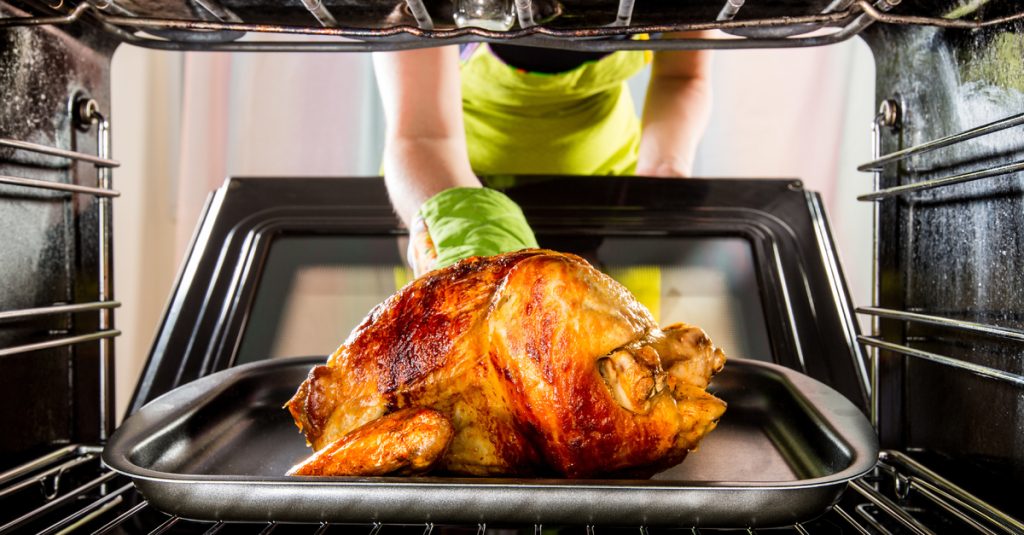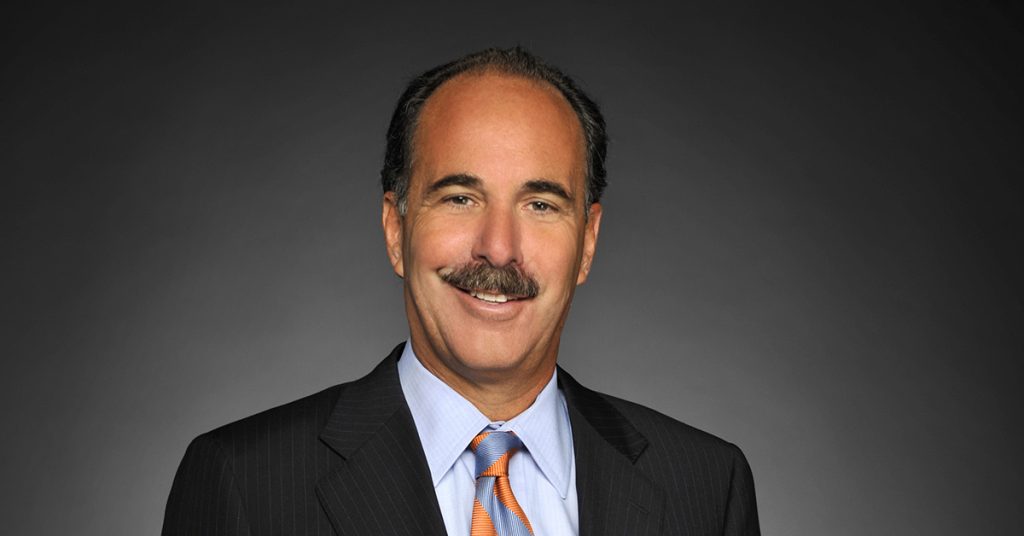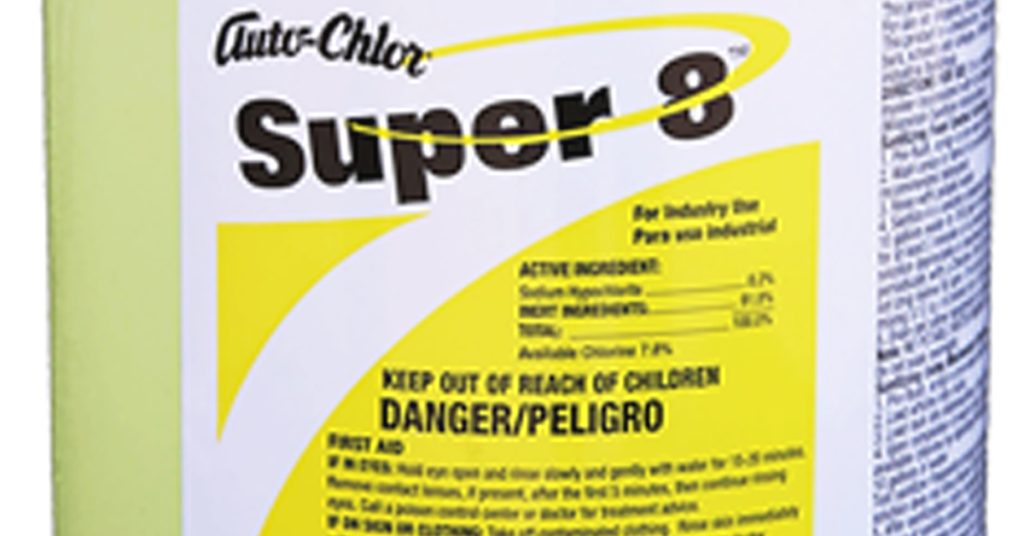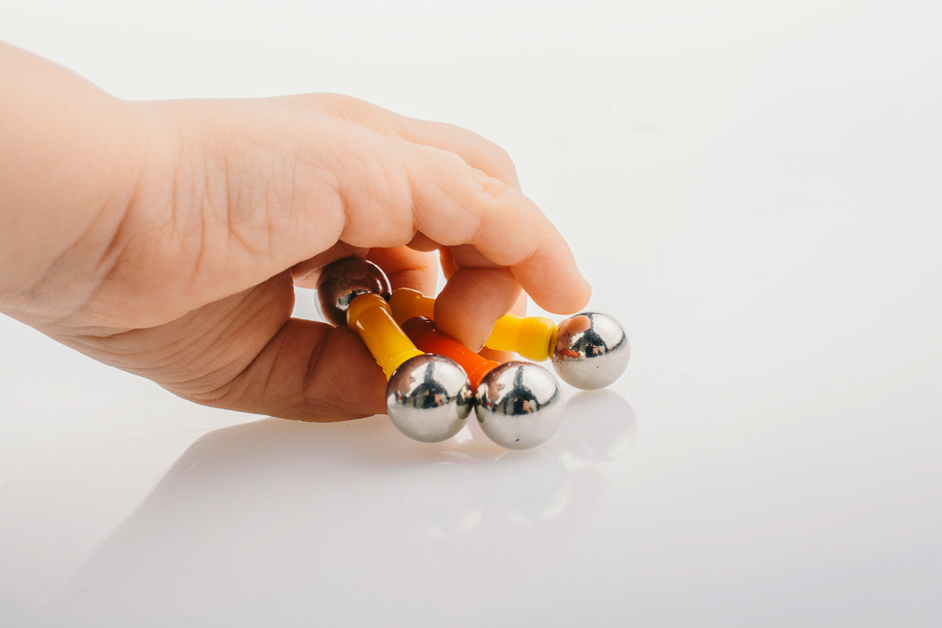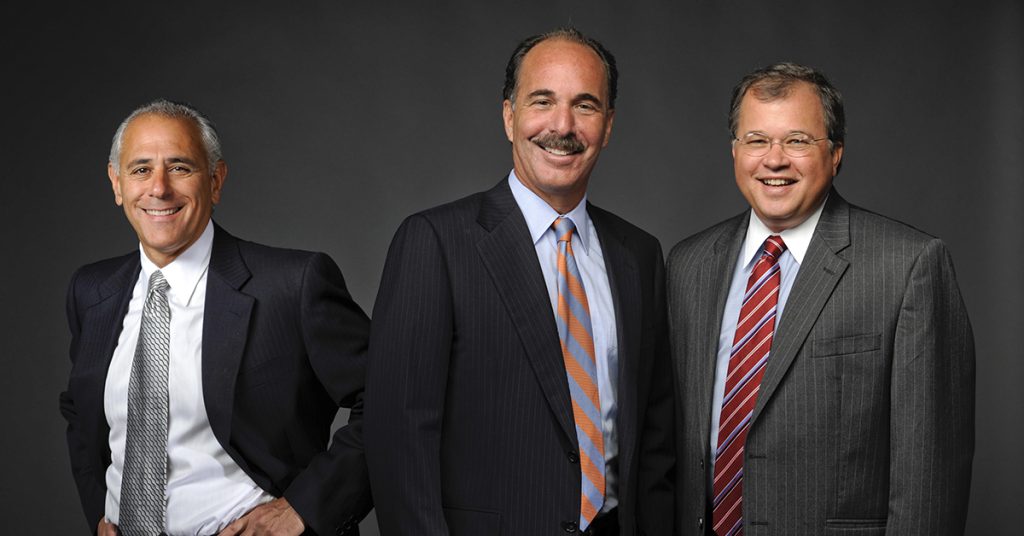Posts by Breakstone, White & Gluck
Take Caution Buying Children Digital Toys, Tablets and Apps
 Many children are asking for tablets, video games and digital toys this holiday season. Before you buy, really learn what you are introducing – and our suggestion is consider waiting. This year, companies such as Google were pressured to change their data collection practices. In 2020, we may just see some change from other companies, too. Read More
Many children are asking for tablets, video games and digital toys this holiday season. Before you buy, really learn what you are introducing – and our suggestion is consider waiting. This year, companies such as Google were pressured to change their data collection practices. In 2020, we may just see some change from other companies, too. Read More
Massachusetts Passes Hands-Free Driving Law
 Massachusetts has finally approved distracted driving legislation. Gov. Charlie Baker signed on Monday, establishing New England as a hands-free driving zone.
Massachusetts has finally approved distracted driving legislation. Gov. Charlie Baker signed on Monday, establishing New England as a hands-free driving zone.
According to The Boston Globe, the new distracted driving law will take effect on Feb. 23, 2020. Massachusetts police officers will issue warnings until the end of March, then citations will begin. This transition period is meant to help drivers get used to the new law. Become familiar with Bluetooth and other “hands-free” technologies now, and if you plan to use an electronic device for navigation, purchase a mount for your windshield or dashboard.
Until now, most drivers have been able to pick up cell phones to talk in Boston and across Massachusetts. However, under the 2010 texting while driving ban, drivers cannot text, read emails or use social media. This has helped deter some drivers, but overall, not enough without a handheld cell phone ban.
Come next year, Massachusetts drivers can only use cell phones under limited circumstances. Drivers can use electronic devices on “hands-free” mode (though they do get a single-swipe to activate or de-activate the “hands-free” mode). As we mentioned, they must use Bluetooth or a similar “hands-free” technology and mount navigation devices.
Police officers can stop drivers as a primary offense, which is more leeway than they have in enforcing seat belt use. Officers will be required to collect data – including age, race and gender – when they issue a warning or citation. The state will use this data to monitor potential racial profiling by police departments.
The new Massachusetts distracted driving law brings notable consequences. These alone are good financial motivators for putting down your cell phone.
Under the new law, drivers will be fined $100 for the first offense, $250 for the second offense and $500 for the third offense (and any subsequent offense). Second-offenders have to participate in a driver safety course. Drivers can also face an insurance surcharge.
Safety is the most important point. Cell phone use is responsible for more than 1 of 4 car crashes, according to the National Safety Council. Distracted drivers killed 3,166 people across the U.S. in 2017, according to the National Highway Traffic Safety Administration. These are hard numbers to hear.
Massachusetts now joins every other New England state in improving hands-free cell phone legislation. Maine was the last state to approve legislation this past summer. According to the National Conference of State Legislature, 20 states already have laws which ban handheld cell phone use, so Massachusetts could be the 21st.
Read the law: AN ACT REQUIRING THE HANDS-FREE USE OF MOBILE TELEPHONES WHILE DRIVING, 2019 Mass. Acts 122
Boston Car Accident Lawyers – About Breakstone, White & Gluck
At Breakstone, White & Gluck, our Boston car accident lawyers have over 100 years combined experience and provide expert investigation into car crashes involving negligent cell phone use. We represent clients who have been injured by negligent driving across Massachusetts, including in Boston, Cambridge, Somerville, Quincy and Braintree. South of Boston, our attorneys have represented numerous clients, including those injured in Brockton, Plymouth and Cape Cod, as well as in Framingham, Worcester and north of Boston, Salem, Peabody, Newburyport and Saugus.
If you have been injured, learn your legal rights. Call 800-379-1244 or 617-723-7676 or use our contact form.
Check Food Recalls and Remember Food Safety This Thanksgiving
 Before you start cooking the biggest meal of the year, check the latest food recalls and come up with a plan for safe food preparation. With good planning, you can minimize the risk of food poisoning at your Thanksgiving table.
Before you start cooking the biggest meal of the year, check the latest food recalls and come up with a plan for safe food preparation. With good planning, you can minimize the risk of food poisoning at your Thanksgiving table.
Food Recalls: Romaine Lettuce
The Food and Drug Administration (FDA) and Centers for Disease Control and Prevention (CDC) are warning consumers to stay away from romaine lettuce contaminated by E. coli. This isn’t the first warning. This follows several romaine lettuce recalls in recent years – including last Thanksgiving (Source: Washington Post).
The current recall is for lettuce contaminated by an E.coli outbreak in Salinas, California. The CDC reports 40 people in 16 states have become ill due to the contamination. The CDC is urging consumers to throw all lettuce with labels which say it originated in Salinas. If you can’t find the growing area, consumers are advised not to eat the lettuce.
From Boston and across Massachusetts, many restaurants have posted advisories that they are not serving romaine lettuce.
Food Recalls: Raw Pork
Federal officials received an anonymous tip that Morris Meat Packaging of Illinois was producing food without federal safety inspection and on Saturdays, outside inspection hours. As a result, the company recalled 515,000 pounds of raw, intact pork products on Nov. 21, 2019. The United States Department of Agriculture’s Food Safety and Inspection Service is calling on consumers to look for EST. 18267 inside the USDA mark of inspection.
Food Recalls: Cheese Nips
Careful before you pick up that Cheese Nip. The parent company of Cheese Nips has issued a voluntary recall because yellow plastic pieces were found on manufacturing equipment. The source was a food scraper and the crackers were recalled to protect consumers from potential food poisoning. Consumers should look for – and not consume – 11-ounce Cheese Nips boxes with a best by date in May 2020. No injuries have been reported in connection to this recall.
Tips to Prevent Food Poisoning in Your Kitchen
Take care to use safe food handling practices when preparing your Thanksgiving meal.
Thaw your turkey in a container in the refrigerator; or in a sealed plastic bag in a sink of cold water (change water every 30 minutes) or in the microwave. Look up and follow instructions from the microwave manufacturer.
Clean, separate, cook and chill. Follow the four steps of food safety to prevent raw turkey from making contact with harmful bacteria. When you wash your hands, remember that germs that cause food poisoning can spread easily in your kitchen. Wash your hands for 20 seconds with soap and water before, during and after preparing and before eating.
Cook stuffing separately from the turkey, thoroughly to 165°F. Only then can the stuffing be cooked inside a turkey. This is a critical and fundamental step because bacteria can form and food poisoning can happen when stuffing is not completely cooked.
Give yourself adequate time to cook the turkey so your guests can safely consume it. The amount of time you need will depend on the weight and size of your turkey. The goal is to reach a safe internal temperature of 165°F. Check by inserting a food thermometer in multiple parts of the turkey, including in the center of the stuffing and the thickest parts of the breast, thigh and wing joint.
(Source: Food Safety Tips for Your Holiday Turkey)
After your Thanksgiving meal, remember to refrigerate leftovers soon (within 2 hours at the most is the CDC recommendation) to prevent food poisoning.
About Breakstone, White & Gluck – Boston Personal Injury Lawyers
Our Boston personal injury lawyers have over 100 years combined experience representing those who have been injured to the negligence and wrongdoing of someone else. If you have been injured, contact our attorneys for a free legal consultation: 800-379-1244 or 617-723-7676 or use our contact form.
Marc L. Breakstone Authors Article, “Establishing Liability Through the Defendant,” in MATA Journal
By Marc L. Breakstone
As published in the November 2019 edition of MATA Journal, a publication of the Massachusetts Academy of Trial Attorneys.
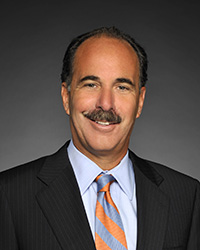
Marc L. Breakstone
There is no better way to prove liability in a negligence lawsuit than through the defendant’s own admissions. The groundwork starts with your interrogatories, which inquire about the facts surrounding the occurrence.
The best opportunity to obtain admissions comes at the deposition of the defendant or its 30(b)(6) designee. With a corporate defendant, your first deponent should be the person most knowledgeable regarding the safety practices and procedures of the defendant.
Early in the deposition ask: “Is safety is your highest priority?” If the answer is “yes,” great. If the answer is “no,” even better (find out what is!).
Human nature is such that every defendant will present themselves as extremely safety conscious. You should hand them enough rope to tie themselves as highly up the safety pole as possible.
Next ask defendant (or its designee), “What are the precautions that should be taken in the context of the occurrence in your case?” Depending on the type of case, ask specifically what it means to drive defensively, to maintain a restaurant floor in a safe condition, to safeguard floor openings at a construction site, to guard pinch points on a machine, or to enter the abdomen with a laparoscopic trocar so as to avoid injury to other structures.
Come into the deposition with your own list of precautions to be followed under the circumstances, so when the defendant runs out of ideas, you can coax additional admissions.
For example, in a car crash case, ask the defendant what it means to drive defensively. Does defensive driving mean paying attention to the roadway at all times, seeing what can be seen, following at a safe distance, anticipating the actions of other, driving at a safe speed under the conditions? Ask the defendant if she follows these rules at all times.
Your objective should be to elicit a list of precautions that a safety conscious party must follow when performing the function involved in your case. Make sure your list addresses every negligent act or omission by defendant.
Once you have your safety checklist, ask the defendant specifically what she did in this case. Drill down to get as many specific factual admissions as you can. Don’t bother asking the defendant to self-judge whether she met her own safety standards. That is for the jury at trial. What you will find is that the defendant’s conduct did not measure up to the high safety standards that she proudly admitted adherence to at the start of the deposition.
If properly done, your deposition may relieve you of the need for an expert witness at trial to testify regarding defendant’s breach of their safety responsibilities.
The MATA Journal is published as a supplement to Massachusetts Lawyers Weekly.
Marc L. Breakstone is a principal of Breakstone, White & Gluck, P.C. in Boston, where he concentrates in representing plaintiffs in serious personal injury and medical malpractice cases.
Buying Your Child a New Bike, Scooter or Snowboard This Holiday? Don’t Forget the Safety Helmet

Give the gift of safety. Always give a helmets to go with new bicycles, scooters and other riding toys.
It is a lot of fun to select a new bicycle or scooter for a child during the holiday season. But when you buy, remember to pick up a new helmet, too. This is a critical tool in protecting against head injuries and under Massachusetts law, children 16 and younger are required to wear helmets on bicycles, scooters, skateboards and inline skates.
Massachusetts Bicycle Helmet Law: Children 16 and younger are required to wear bicycle helmets when they ride bikes in Massachusetts, under M.G.L. c. 85, § 11B.
Massachusetts Scooter Helmet Law. M.G.L. c. 85, § 11B1/2 states children 16 and younger must also wear safety helmets on scooters, skateboards and inline skates, as well as other manually-propelled wheeled vehicles.
Helmet Buying Tips: Spotlight on Bike Helmets
Buy a bicycle helmet which meets the safety standards set by the U.S. Consumer Product Safety Commission (16 C.F.R. part 1203). This standard is specifically designed to protect a child’s head with shock-absorbent material in bicycle accidents or falls. It requires chin traps be strong enough to keep the helmet in position on the head.
Buy a helmet separately from your bike. You may find it helpful to buy a helmet separately. To get started, measure around your child’s head with a cloth tape measure. Measure just above your child’s eyebrows. Start looking now online or visit your local bicycle shop.
Stick to traditional bike helmets. The CPSC discourages parents from buying helmets with decorative and costume pieces, such as horns or parts which protrude from the helmet. These will interfere with the helmet’s ability to protect a child’s head should they ever hit the ground.
How long has your child been wearing that helmet? If your child has been wearing a helmet for three years, this is a good time to buy a new one. But depending on your child’s growth and wear and tear, you may want to replace it sooner. Carefully inspect the helmet on the inside and outside.
Buy an adjustable helmet. Because children grow fast, we suggest an adjustable helmet which can be tightened or loosened in the back.
Helmets Designed for Other Activities
Safety helmets are designed for certain purposes. Each sport and activity involves a different impact.
But bicycle helmets can often be used for recreational in-line skating, roller skating or manual kick scooters, according to the Consumer Product Safety Commission’s (CPSC) helmet guidelines. Check these guidelines whenever you buy a helmet.
Talk to your child’s sports coach about helmet guidelines for football, hockey, lacrosse and baseball.
Get your helmets ready for the winter. Helmets are recommended for skiing, snowmobiling, snowboarding and snow tubing. Many skiers say helmets interfere with their peripheral vision and response time. If this is your thought, consider reading this New York Times blog on just how much protection they can provide.
Before we close, another point is there are times when children should definitely NOT WEAR HELMETS, including at the playground or when playing at home. Helmets and straps can get caught and strangle a child on staircases and step ladders.
CPSC Guide – “What Helmet for Which Activity”
Helmets are essential to protecting your child. Here is the CPSC’s Guide, “Which Helmet for Which Activity.” This guide provides you with recommended safety standard guidelines for different activities, so it’s definitely worth bookmarking. Another helpful site is the CSPC recalls website, which you can search for product recalls before you make a purchase.
About Breakstone, White & Gluck
Boston Personal Injury Lawyers – Toy Safety Lawyers
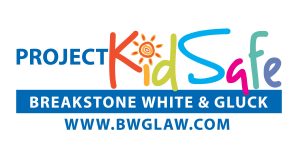 At Breakstone, White & Gluck, our lawyers are consistently recognized for their awards for clients in personal injury, medical malpractice and product liability cases. Through our Project KidSafe campaign, we work to promote bicycle safety and the well-being of children in Massachusetts. To date, we have donated over 25,000 bicycle helmets to children across the state.
At Breakstone, White & Gluck, our lawyers are consistently recognized for their awards for clients in personal injury, medical malpractice and product liability cases. Through our Project KidSafe campaign, we work to promote bicycle safety and the well-being of children in Massachusetts. To date, we have donated over 25,000 bicycle helmets to children across the state.
If you are shopping for a child, we invite you to read more of our holiday toy safety series.
Holiday Toy Safety: Check for Age Recommendations and Choking Hazard Labels
 Age recommendation labels are the first tool you have in selecting safe holiday toys. Anyone purchasing toys for young children wants to familiarize themselves with the choking hazard-small parts label.
Age recommendation labels are the first tool you have in selecting safe holiday toys. Anyone purchasing toys for young children wants to familiarize themselves with the choking hazard-small parts label.
Warning: Choking Hazard – Small Parts. Not for Children Under 3 Years
Each year, children suffer choking injuries and deaths after consuming food or putting small objects in their mouths. In the late 1970s, the Consumer Product Safety Commission (CPSC) led a three-month study of an estimated 3,800 injuries involving children under age 10. It was determined that children under age 3 suffered more than half of all these injuries. More than 50 children under 3 died in accidents involving small parts.
With those numbers, the CPSC announced the small parts regulation, which became effective on January 1, 1980. Since then, toy manufacturers have been required to test toys and parts using the small parts cylinder test.
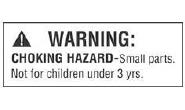
This cylinder has a diameter of 1.25 inches. The bottom of the cylinder is slanted, opening 1 to 2.25 inches. Toys which fall through the cylinder must carry the choking hazard – small parts warning and state not for children under 3 years old. Toys may also require labels if they fit through the tube, but break it during subsequent “use and abuse” testing (Source: U.S. PIRG, Trouble in Toyland 2018).
Toys which are too large can be sold without the choking hazard label, though they may require another type of labeling.
Small Parts Warning for Children Between Ages 3 and 6 Years
Any small part intended for children between age 3 and 6 must carry the same labeling: “Warning: Choking Hazard — This toy is a small part. Not for children under 3 years.”
Small Parts Warning – Small Balls
There is a separate federal standard for small balls, according to U.S. PIRG. Balls with a diameter of 1.75 inches are banned for children younger than 3 years of age.
Small balls must carry this age-recommendation label: “Warning: Choking Hazard — This toy is a small ball. Not for children under 3 years.” A similar label is required for toys which contain small balls: “Warning: Choking Hazard–Toy contains a small ball. Not for children under 3 years.”
Toymakers are required to test and use age recommendation labels. All toys intended for children age 12 and younger must undergo third-party testing and meet the most recent version of the federal safety standard, ATSM F963.
But there are times when parents and anyone buying a toy should be skeptical. Toymakers have made errors in labeling and there can be miscommunication between manufacturers and retailers when toys are displayed without packaging. Online product descriptions may not be accurate.
Remember These Toys Have Small Parts!
- Marbles
- Magnets
- Game pieces (such as the Monopoly characters)
- Legos and building bricks
- Small puzzle pieces (and cardboard pieces are a danger because small children can chew them and choke)
- Button batteries
- The clothing and parts on stuffed animals and dolls
- Pens and pencils with caps which can become loose
Additional Toy Safety Standards for Children Age 3 and Younger
While we are talking about small parts, we also want to remind parents of other federal toy safety guidelines for children under 3.
- Toys and children’s products must not have sharp points or edges which can potentially injure children.
- Paints and surface coating cannot contain more than .06 percent lead or other hazardous materials.
- Children’s pajamas, clothing and products which fail to meet flammability limits.
The best way to stay informed is to check the CPSC website for toy safety recalls and product warnings.
Final Points on Toy Safety for Young Children
Carefully inspect all toy sets and stuffed animals before and after purchase. Open boxes, handle the pieces yourself before giving. If you buy online, check if the box matches the online product description. Because of the demand for toys near the holidays, it’s not unusual for shoppers to receive a toy similar to what they ordered.Decide whether the toy will be safe near your child and their siblings. You should always consider younger siblings when buying gifts. If they are not at least 3 or older, wait another year. Also pause if the younger sibling just isn’t ready.
If your children are the right age and ready, purchase a secure container to keep the small parts in. Keep this container separate from other toys in your home and be mindful of not letting small pieces scatter.
Finally, supervise children whenever they play with small parts. Even older children can find themselves in dangerous situations at times when handling small pieces. This is especially true with new toys. So as they play, sit with them at the table or just stay in the room so you can help.
About Breakstone, White & Gluck – Boston Toy Safety Lawyers
 Our Boston personal injury lawyers represent clients in all personal injury matters, including motor vehicle accidents, medical malpractice, premises liability, wrongful death and cases involving injuries caused by defective products and unsafe toys. We share our holiday toy safety series as part of our Project KidSafe campaign.
Our Boston personal injury lawyers represent clients in all personal injury matters, including motor vehicle accidents, medical malpractice, premises liability, wrongful death and cases involving injuries caused by defective products and unsafe toys. We share our holiday toy safety series as part of our Project KidSafe campaign.
To learn more, visit our toy safety page. You can also visit our website to learn more about our attorneys and their experience.
Chemical Inhalation Exposure Kills Restaurant Employee
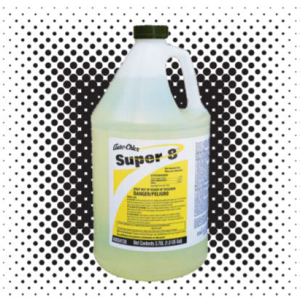 A tragic chemical exposure has claimed the life of a worker at the Buffalo Wild Wings restaurant in Burlington. Ten other restaurant employees and patrons also reported inhalation injuries.
A tragic chemical exposure has claimed the life of a worker at the Buffalo Wild Wings restaurant in Burlington. Ten other restaurant employees and patrons also reported inhalation injuries.
The Boston Globe reported that a male employee cleaning the kitchen with a product called “Super 8” was overtaken by nausea. The employee stepped outside to catch his breath. A second employee who attempted to remove the cleaner became sick and subsequently died from inhalation injuries. According to the Globe, the 10 other employees and restaurant patrons reported shortness of breath, burning eyes and other symptoms of chemical exposure for which they were treated at local emergency rooms.
News reports identified the caustic cleaning agent as “Super 8”, a sodium hypochorite concentrated solution which is intended for use as a general-purpose sanitizer empty stain or for manual or automatic dishwashing. When inhaled, the fumes cause severe bronchial irritation and pulmonary edema.
Chemical exposures in restaurants occur with alarming frequency. Breakstone, White & Gluck has represented several victims of chemical exposures due to inhalation and caustic burn injuries. In our experience, inhalation injuries such as the recent Buffalo Wild Wings incident occur as a result of the failure to provide:
- adequate ventilation;
- adequate airway protective gear
- ill-advised mixing of chemical agents
- adequate skin protective gear
Breakstone, White & Gluck has a track record of success in obtaining justice for victims of serious respiratory and burn injuries caused by chemical exposures in the workplace. In many of these cases, the exposures result in life-long respiratory injuries, scarring and emotional distress.
Recent cases:
- Our attorneys represented a worker who inhaled chlorine at the Deer Island Waste Facility in Boston and suffered severe burns which temporarily handicapped him, leaving him unable to work.
- Our attorneys represented a restaurant worker who consumed tainted beer from a recently sanitized beer tap. The lines had been chemically sanitized, but not properly flushed, resulting in ingestion of chlorine which caused esophageal burns.
Free Legal Consultation – Breakstone, White & Gluck of Boston
We would welcome the opportunity to review your potential claim related to chemical exposure and inhalation injuries or burns to see if we can assist you in obtaining full and fair monetary compensation.
Please contact the Boston personal injury lawyers at Breakstone, White & Gluck for a free and confidential legal consultation. Call 800-379-1244 or 67-723-7676 or use our contact form.
Thank You From Boston Police Commissioner William Gross
Boston Police Commissioner William Gross thanks Attorney Marc L. Breakstone for our recent donation of 160 children’s bicycle helmets. This was the 4th year that Breakstone, White & Gluck and our Project KidSafe campaign have partnered with the Boston Police Department to help protect children from head injuries.
“I would just like to thank you sir. What a great donation to the communities of Boston. You know oftentimes, people think that when someone has made it, they are affluential and doing well, that you don’t care, especially about the inner city, about people in the inner city. You’re helping me break negative stereotypical views by showing people that you do care. None of this stuff is hand me downs. These are expensive bike helmets. You are showing that you do care and that no matter what, good people are good people and are willing to give back. So you are making a difference…”
To learn more about Breakstone, White & Gluck, visit our website.
Keep Magnet Toys Off Your Holiday Shopping List
We urge parents to keep magnet toys off your holiday shopping list for young children. High-powered “rare-earth” desk magnet toys are highly dangerous and there are many painful stories of children ingesting them, then fighting for their lives in surgery. But there are also other types of magnet toys, including magnet tile building sets and magnet construction toys. While these are very popular, this doesn’t mean they are safe for your family. Take time to do your research, read age recommendations and really consider your children’s needs.
Magnet Desk Toys or Cluster Magnet Toys
Read by product type:
Magnet Desk Toys or Cluster Magnet Toys
Tile Magnet Toys
Magnetic Construction Sets
Final Word on Safety
Magnet Desk Toys or Cluster Magnet Toys
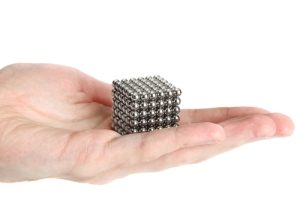
Cross desktop magnet sets off your holiday shopping list. These have caused hundreds of children injuries.
The Consumer Product Safety Commission (CPSC) has worked to take desktop magnet toys off the market to prevent injuries to children. The problem is the average set has 125 or 216 strong magnet balls, though some have more than 1,000 pieces. The magnets are tiny and are extremely high-powered.
These magnet sets come apart and can be reassembled into unique shapes. In a child’s hands, the magnet clusters may become a necklace, triangle or whatever formation they imagine. When magnets are put in a child’s mouth, they can attract to each other, causing serious injuries in the digestive system as well as blood poisoning. Children usually require surgery for the intense pain.
New Magnet Safety Standard. Prior to 2014, “rare-earth” magnet sets were required to carry age recommendation labeling of 14 and older. In 2014, the CPSC established a federal toy safety standard which required magnets to be large enough to exceed the CPSC’s “small part” standard for toys or that magnetic parts have a force of attraction of 50 kG² mm² or less, according to the CPSC’s Final Rule: Safety Standards for Magnet Sets. The CPSC safety standard effectively made it illegal to sell “rare-earth” magnet sets in the U.S. and there was a positive response, an 80 percent reduction in magnet-ingested injuries, according to The Journal of Pediatrics.
You may guess young children are at the highest risk. But children age 4 through 12 suffered the most injuries in the CPSC’s analysis of ER visits over 5 years, from 2009 to 2013. According to the Federal Register dated October 3, 2014, the agency concluded an estimated 2,900 children had suffered magnet ingestion injuries. Children age 4 through 12 suffered 1,900 injuries – or 65 percent.
Tile Magnet Toys
For all this work, in 2016, the 10th Circuit of Appeals ruled the CPSC’s pre-requisite factual findings were “incomplete and inadequately explained.” The Court vacated the safety standard and remanded it back to the CPSC for further proceedings.
The lawsuit had been filed by Zen Magnets, one of the “rare-earth” magnet makers. The company is now selling its products again, under the Buckyballs and Mandala names, according to Tech Crunch. Again, we stress, please don’t buy these toys, especially if you have children or a pet. The parts are small and scatter easily. If you don’t find our blog compelling, we encourage you to read this article in STAT, called “Toy magnets are harming kids again. They need to be banned – for good,” August 6, 2019.
Tile Magnet Toys
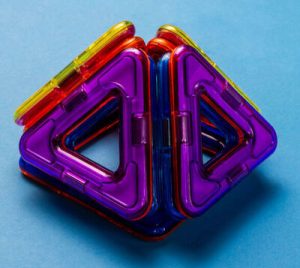
Magnet tile toys
These are magnets encased in plastic triangle and square shapes. These are popular, marketed as toys that help stimulate learning and imagination. Some of these are designed for children under age 3, some for children ages 3 and up; others are for age 6 and up. If you do purchase one of these sets, carefully check the age recommendation and secure it in a container out of reach of children.
There has been at least one case of the encasements opening and a child swallowing magnets. Last December, a Wisconsin mother shared her frightening story on social media and the Today Show reported on it. The woman’s 4-year-old son had swallowed 13 magnets from one of the tile magnet kits. After he began vomiting, she rushed him to a local hospital where surgeons had to remove part of his colon, intestine and appendix. The product manufacturer was not identified in the story.
The CPSC regularly issues recalls about toys containing small magnet parts. One of the largest recalls involving tile magnet building toys came in 2006, when Mega Brands America, Inc. recalled 4 million Magnetix Magnetic Building Sets. The recall was first announced on March 31, 2006 and re-issued and expanded in April 2007. The CPSC reported one child had died and one child had suffered aspiration. 27 others had suffered intestinal injuries, according to the CPSC news release.
The tragedy could have claimed even more lives; there had been 1,500 reports of magnets coming apart. Although the Magnetix Magnetic Building Sets were labeled age 6 and older, at least 10 injuries involved older children, up to age 11.
Magnetic Construction Sets
According to CBS News, in October of 2006, Mega Brands America settled a lawsuit with 15 victims for $13.5 million.
In 2009, consumers learned there was further wrongdoing in this case. On April 14, the CPSC announced that Mega Brands America, Inc. had agreed to pay a $1.1 million civil penalty to settle allegations that the company (and Rose Art Industries, which it had acquired) had failed to provide timely information about product dangers to children.
Magnetic Construction Sets
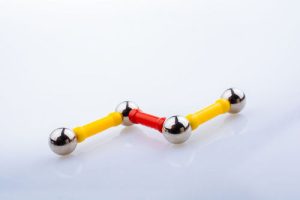
Magnet construction sets typically have magnets snap together with other stick pieces.
These sets include plastic rods and balls which can be snapped together with the magnet attraction.
Final Word on Safety
One problem is Consumer Reports found a full range of age recommendations across several popular products – and manufacturers unwilling to answer questions. Since age recommendations are the most fundamental tool consumers have, we recommend steering clear of these.
Final Word on Safety
The CPCS is responsible for overseeing product recalls and a quick search of its database can glean valuable information for parents. Visit www.cpsc.gov and search by product name or type of products. You can also visit the CPSC’s magnet information center.
With magnet toys, product regulations and age recommendations continue to change. They are very challenging to bring into any home safely, but especially homes with children of various ages and development skills and pets. In the end, you must make your own decision, but we urge you to be overly cautious and purchase other toys. There are so many other toys out there which can provide your child with a safe and enjoyable experience.
Breakstone, White & Gluck – Boston Toy Safety Lawyers
Breakstone, White & Gluck is a Boston law firm specializing in personal injury, medical malpractice and product liability. We wish Massachusetts families a safe and healthy holiday season and share our toy safety tips as part of our Project KidSafe campaign.
If you have been injured, contact Breakstone, White & Gluck to learn your legal rights at 800-379- or 617-723-7676. You can also use our contact form.
Breakstone, White & Gluck Recognized by Super Lawyers
It is our pleasure to announce that Super Lawyers has recognized Breakstone, White & Gluck in its 2019 rankings. This was the 16th year our attorneys have been recognized.
Marc L. Breakstone has been selected to the Top 100 New England Super Lawyers, Top 100 Massachusetts Super Lawyers and the 2019 Massachusetts Super Lawyers list, recognized as a top-rated medical malpractice attorney in Boston.
David W. White has been selected to the 2019 Massachusetts Super Lawyers list, recognized as a top-rated personal injury attorney in Boston. Attorney White has previously been selected to the Top 100 Massachusetts Super Lawers seven times and to the Top 100 New England Super Lawyers three times.
Ronald E. Gluck has been selected to the 2019 Massachusetts Super Lawyers list, recognized as a top-rated personal injury attorney in Boston.
Super Lawyers is a rating service which highlights outstanding lawyers from more than 70 practice areas. Selections are made using a multiphase process, including a statewide survey of lawyers, independent research and evaluation and peer reviews from within a practice area.
Super Lawyers recognizes the top 5 percent of lawyers from that process. Another 2.5 percent of attorneys are selected to the Rising Stars list, which showcases talented attorneys under age 40.
About Breakstone, White & Gluck
Over 100 Years Combined Experience in Personal Injury Plaintiff Representation
Breakstone, White & Gluck is respected across Massachusetts for our commitment to our clients and our results. We have been representing plaintiffs in personal injury and medical malpractice cases as a firm since 1992. Each of our partners has over 30 years of experience.
Our firm is experienced in handling all types of personal injury cases, including those involving catastrophic accidents, wrongful death, motor vehicle accidents, product liability, premises liability, construction accidents, explosions, spinal cord injuries, head injuries and traumatic brain injuries. Our attorneys are regularly interviewed in the local media for their expertise in these specialties and Massachusetts insurance laws.
We have always been active in the Massachusetts legal community and are dedicated to sharing our knowledge with other attorneys through continuing legal education and professional organizations. Attorney Marc L. Breakstone and Attorney Ronald E. Gluck serve on the Board of Trustees for the Massachusetts Academy of Trial Attorneys (MATA), while Attorney David W. White is a past president of the Massachusetts Bar Association. We are also committed to giving back and working to prevent injuries. Through our Project KidSafe campaign, our attorneys have given away more than 25,000 free bicycle helmets to children across the state of Massachusetts.
We invite you to visit our website to read about our work and watch testimonials from past clients.
Free Legal Consultation – Breakstone, White & Gluck
If you have been injured, you should speak to an experienced Boston personal injury lawyer and learn your legal rights for seeking financial compensation. For a free consultation, contact us at 800-379-1244 or 617-723-7676. You can also use our contact form.




